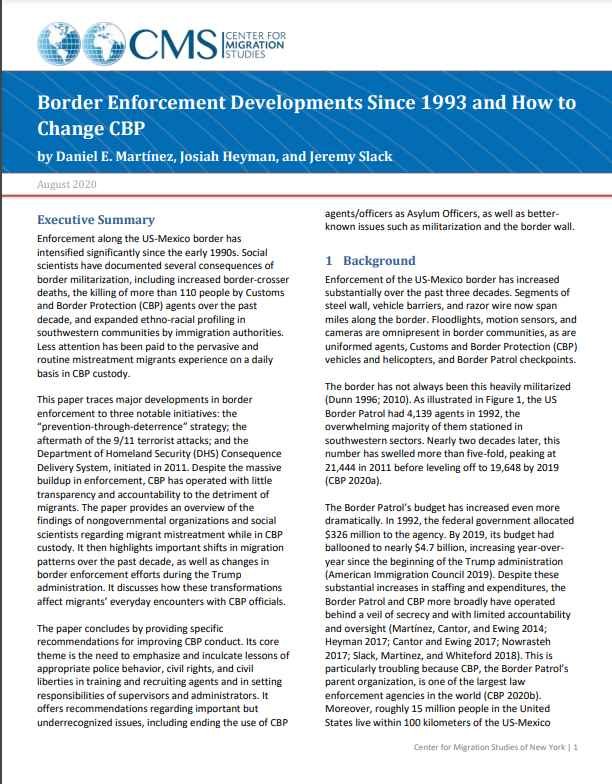Border enforcement developments since 1993 and how to change CB
By: Daniel E Martínez, Josiah Heyman, Jeremy Slack
Enforcement along the US-Mexico border has intensified significantly since the early 1990s. Social scientists have documented several consequences of border militarization, including increased border-crosser deaths, the killing of more than 110 people by Customs and Border Protection (CBP) agents over the past decade, and expanded ethno-racial profiling in southwestern communities by immigration authorities. Less attention has been paid to the pervasive and routine mistreatment migrants experience on a daily basis in CBP custody.
This paper traces major developments in border enforcement to three notable initiatives: the “prevention-through-deterrence” strategy; the aftermath of the 9/11 terrorist attacks; and the Department of Homeland Security (DHS) Consequence Delivery System, initiated in 2011. Despite the massive buildup in enforcement, CBP has operated with little transparency and accountability to the detriment of migrants. The paper provides an overview of the findings of nongovernmental organizations and social scientists regarding migrant mistreatment while in CBP custody. It then highlights important shifts in migration patterns over the past decade, as well as changes in border enforcement efforts during the Trump administration. It discusses how these transformations affect migrants’ everyday encounters with CBP officials.
New York: Center for Migration Studies of New York (CMS) and the Zolberg Institute on Migration and Mobility at the New School, 2020. 22p.


